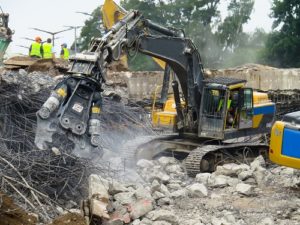Demolition sites generate a lot of rubbish. This is probably an understatement, particularly if you’re picturing someone taking down a massive structure. It’s natural that skip bin hire Perth to be present on these sites, but other things are important.
There is more to waste management than just having the right containers. This is a situation that requires a management plan. Each part of the plan must be adjusted based on the different types of waste that a demolition site generates.
Demolition Rubbish And Your Options
Wood is going to be pretty common. There are very few buildings that don’t have any wood in them at all.
Recycling scraps are possible, usually through mixing them with other materials. Particleboard, furniture, fiberboard, and the like can all be made from recycled wood. If at all possible, reuse any intact wooden fixtures like cabinets and columns.
 Most areas also have wood recycling facilities. Go check.
Most areas also have wood recycling facilities. Go check.
A related waste product is a drywall. If the pieces are intact or large enough, donate them to Habitat for Humanity. Scraps can be recycled into new drywall or used as filler in wall cavities.
Metal waste, which is a prominent thing in more modern structures, is usually recyclable too. Steel parts can be reused, while other metals can be sent to scrap metal dealers. Steel beams, metal fencing, hardware, plumbing, and electrical equipment can all be recycled too.
Carpeting can be turned into carpet padding, though this can cost based on the weight. Recycled carpet is also used in composite lumber, railroad tires, and cushioning.
Concrete is a common industrial material in construction. If you want to recycle asphalt shingles, you have the option! It’ll end up being used as hot asphalt mix most often. Concrete that’s been ground up is used as base material for new roads.
You’ll want to check online. There might be a concrete or asphalt recycling facility somewhere in your area.
For intact items, donations are also a good move.
Doors, windows, taps, electrical gear, bathtubs can all be donated to centres that reuse them. A quick online search should help you find people or facilities that can assist in this. Provided these are in good condition, you should have no trouble giving them away.
Finally, a general purpose answer is to reuse as much of the material as possible. Pipes that aren’t outdated, walls that don’t need to be torn down, or equipment that’s still in good condition don’t need to be thrown out. Retaining as much as possible can cut down on the waste.

Recent Comments